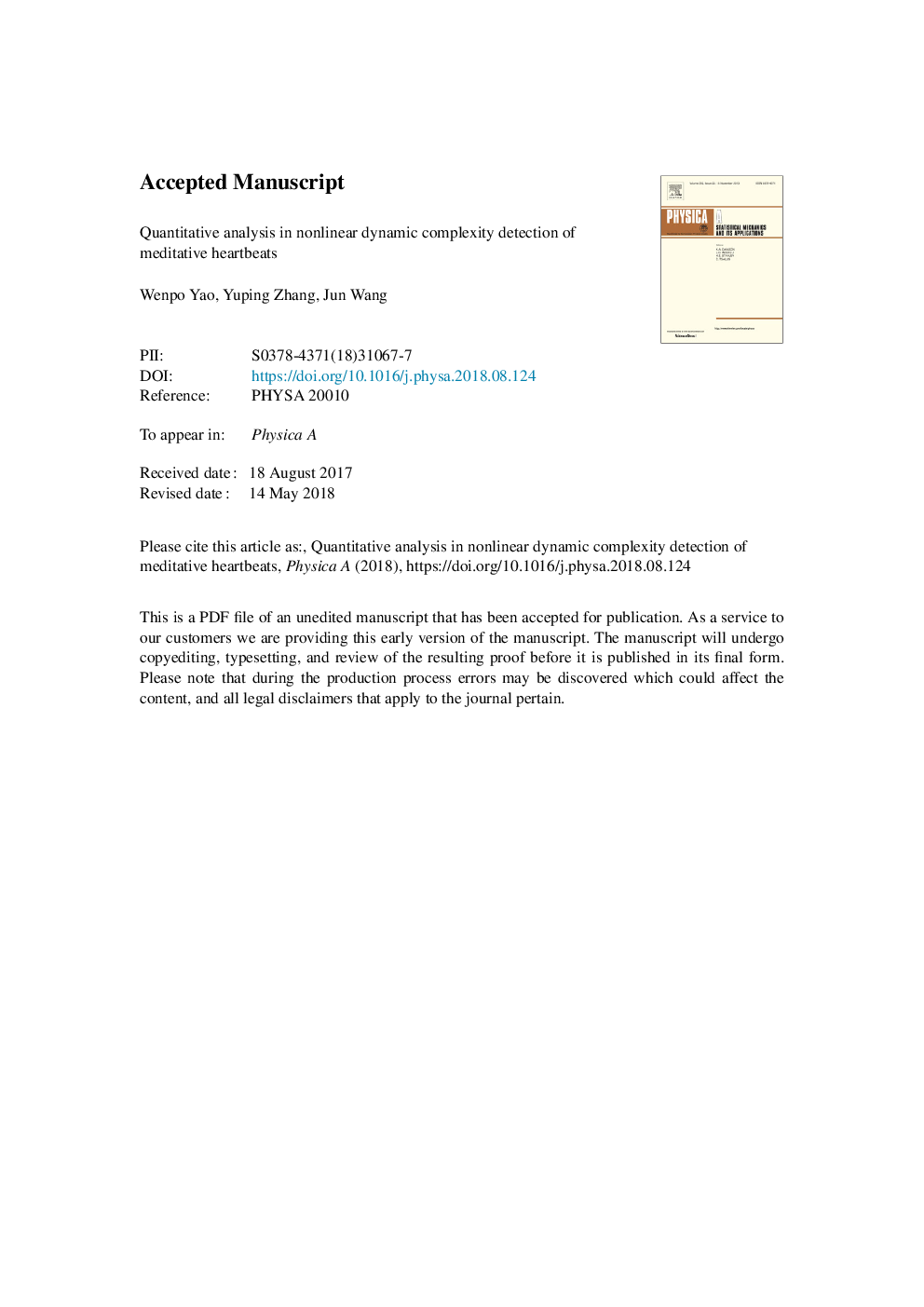| Article ID | Journal | Published Year | Pages | File Type |
|---|---|---|---|---|
| 11004908 | Physica A: Statistical Mechanics and its Applications | 2018 | 18 Pages |
Abstract
Meditation, a self-regulation practice, attracts attention on its physiological and psychological effects, and its effects on nonlinear complexity of heartbeats are analyzed in our contribution. Heartbeats of Chinese Chi, Kundalini Yoga practitioners and non-meditation metronomic breathing subjects, all from physionet, contribute to our research. We introduce the meditative heart rates in time and frequency domains, and extract their nonlinear dynamics by local dynamic and global static symbolic time-series analysis. Shannon entropy for each individual symbolization and joint entropy for the two kinds of symbolic transformations are applied to detect heartbeats' nonlinear complexity. Test results prove that symbolic entropy is an exquisite quantitative analysis to characterize and distinguish nonlinear complexity of the physiological signals. Heart rates, during meditation, show highest regularities and lowest nonlinear complexities, and meditators, even in pre-meditation status, have lower heartbeats nonlinear complexity than the non-meditation volunteers, which suggest that meditation enhances cardiac self-regulation and reduces the nonlinear dynamic complexity of heart rates.
Related Topics
Physical Sciences and Engineering
Mathematics
Mathematical Physics
Authors
Wenpo Yao, Yuping Zhang, Jun Wang,
